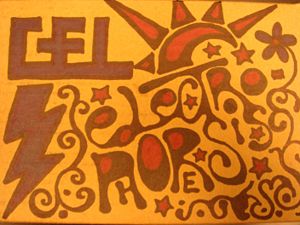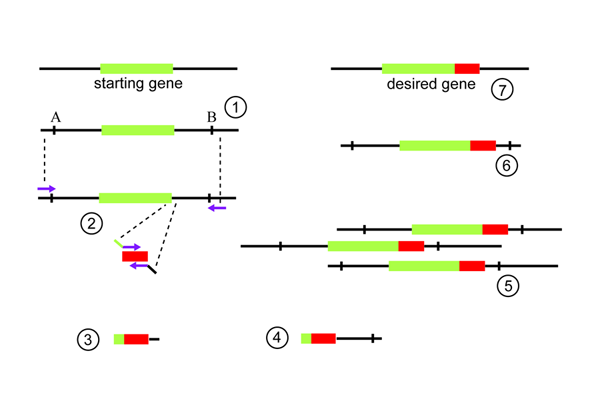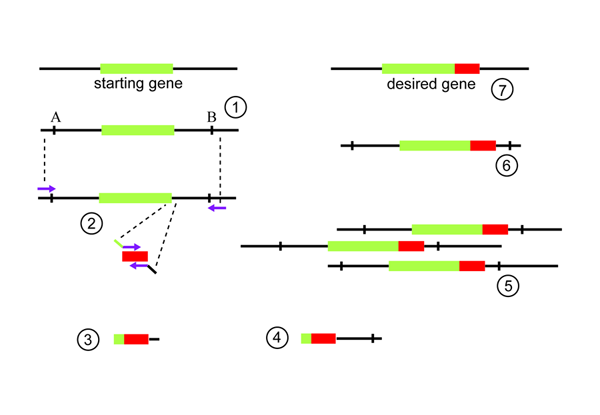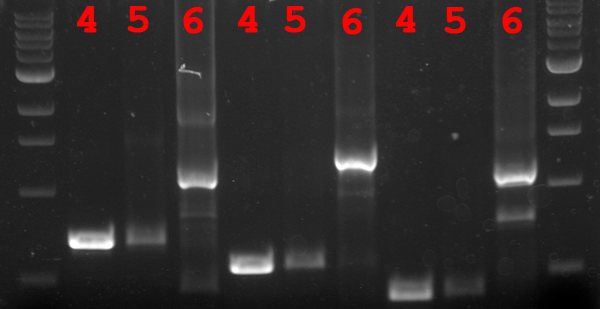Assay of Tyrosine Kinases Using Synthetic Peptides
Todd Miller (State University of New York at Stony Brook)
Small synthetic peptide substrates are especially well suited for applications such as assays of tyrosine kinases in permeabilized cells or for enzyme kinetic studies. Although a number of different techniques are available to separate the phosphorylated peptides from other assay components, the most commonly used method is to use peptides containing basic residues. These peptides bind to phosphocellulose paper at low pH, while labelled ATP does not and is washed away.
Starting Materials
- Protein Kinase (stock solutions of 1-10 mg/ml pure kinases): for these assays, we have used both purified kinases as well as crude cell extracts. For cell extracts, we recommend the addition of a phosphatase inhibitor (e.g. 0.1-1 mM sodium orthovanadate). For each enzyme, it is important to determine the optimal buffer, ionic strength, and pH for activity. If these conditions have not been established, the protocol listed below can be used as a starting point.
- Peptide Substrate (stock solution of 10 mM): peptide substrates typically contain one tyrosine in a phosphorylation site motif. A recent compilation of phosphorylation sites can be found in Biochimica et Biophysica Acta 1314 (1996) 191-225. In addition, the peptide substrates should have a net positive charge to facilitate binding to phosphocellulose filters used in the assay. For quantitative binding to the phosphocellulose paper, we recommend at least 2 basic residues and a free amino terminus. If a phosphorylation site motif is not known, a general tyrosine kinase substrate can be used. For example, “Src-related peptide” (RRLIEDAEYAARG; Sigma # A7433) is a substrate for many receptor and nonreceptor tyrosine kinases). For initial reactions, a peptide concentration of 0.7-1.5 mM should be used. To determine the kinetic parameters for phosphorylation of the synthetic peptide, a range of peptide concentrations is required (see below).
- 5X Kinase Buffer: contains 5 mg/mL BSA (to prevent kinase adsorption to the assay tube), 150 mM Tris-Cl (pH 7.5), 100 mM MgCl2. Divalent cations are required for most tyrosine kinases, although some tyrosine kinases (for example, insulin, IGF-1, and PDGF receptor kinases) require MnCl2 in place of MgCl2 (or in addition to MgCl2). The optimal concentrations of divalent cations must be determined empirically.
- ATP: a stock solution of 1-5 mM is convenient. Note that most tyrosine kinases have Km values for ATP in the range 10-150 µM, so for kinetic experiments it is important to use saturating concentrations of ATP to arrive at values of Km and Vmax for the peptides.
- [gamma-32P]ATP:10 mCi/mL.
Tyrosine Kinase Assays
A standard tyrosine kinase assay is carried out in a volume of 25 µl:
- 5 µl of 5X kinase buffer
- 5 µl of 1.0 mM ATP (0.2 mM final concentration)
- [gamma-32P]ATP (100-500 cpm/pmol)
- 3 µl of 10 mM peptide substrate (1.2 mM final concentration)
- tyrosine kinase
- H2O to 25 µl
I) Before the experiments, prepare a cocktail containing enough buffer, ATP, and [gamma-32P]ATP to complete the assays. For experiments with the same peptide substrate concentrations, the peptide should be incorporated into the cocktail. For assays at different peptide concentrations, the substrate should be diluted and added separately to each tube. After dispensing the cocktail into 1.5 ml microcentrifuge tubes, place the tubes in a water bath at 30 degrees C. Reactions should be initiated by the addition of kinase and allowed to proceed at 30 degrees C.
II) After the desired time, terminate the reactions by adding 45 µl ice-cold 10% trichloroacetic acid (TCA) to each reaction. Vortex the reactions.
III) Spin for 2 minutes in microcentrifuge (10K rpm).
IV) Spot 35 µl of the supernatants onto 2.1-cm diameter Whatman P81 cellulose phosphate filter circles.
VI) Wash the P81 filter circles three times with 500 ml cold 0.5% phosphoric acid (5-10 minutes per wash). The progress of the washing steps can be followed by removing the P81 filter circle for a blank reaction and checking it with a Geiger counter.
VII) Wash once with 200 ml acetone at room temperature for 5 minutes.
VIII) Allow the filter circles to dry at room temperature.
IX) Put filter circles into scintillation vials and measure 32P incorporation by counting the pads dry in a scintillation counter. The specific activity of ATP in a kinase reaction (e.g., in cpm/pmol) can be determined by spotting a small sample (2-5 µl) of the reaction onto a P81 filter circle and counting directly (no washing). Counts per minute obtained in the kinase reaction (minus blank) are then divided by the specific activity to determine the moles of phosphate transferred in the reaction.
Kinetics of Peptide Phosphorylation
The kinetic parameters for phosphorylation of a synthetic peptide by a tyrosine kinase can be determined using a variation on the protocol above.
I) Carry out a reaction at a high concentration of peptide (see above) to establish that the peptide is a substrate.
II) Vary the enzyme concentration in the assay. The rate of peptide phosphorylation should be proportional to the enzyme concentration under the conditions of the assay. This experiment is also used to determine the amount of enzyme needed for the kinetic studies. To determine rates, a time course of peptide phosphorylation should be carried out. In this case, prepare a larger enzyme reaction (we use 150 µl). At the desired time points, withdraw 25 µl aliquots and transfer them to microcentrifuge tubes containing 45 µl of ice-cold 10% TCA, and analyze the reactions as described above. Phosphorylation of the peptide should be linear with time, and for measurement of kinetic constants the initial rates of reaction (5%) should be used.
III) Vary the peptide concentration in the assay. Use a plot of velocity vs. peptide concentration to get an initial estimate of the value of Km. A wide range of substrate concentrations (e.g., 20 µM to 2 mM) should be used in this initial measurement.
IV) To determine Km (peptide) and Vmax , vary the peptide concentration and measure the rate of phosphate transfer. A good range of substrate concentrations are the following multiples of Km: 0.125 x Km, 0.25 x Km, 0.5 x Km, 1.0 x Km, 2.0 x Km, 4.0 x Km, 8.0 x Km. The reactions should be carried out in triplicate for best results.
V) Kinetic constants are determined by weighted non-linear least-squares fit to the hyperbolic velocity vs. [substrate] plots using iterative programs such as NFIT (Island Products, Galveston, TX).





